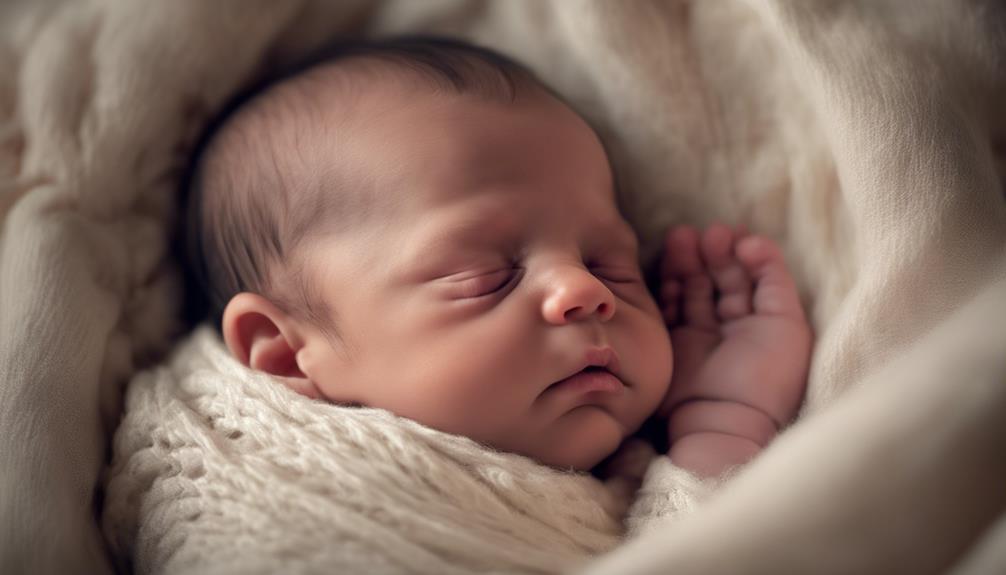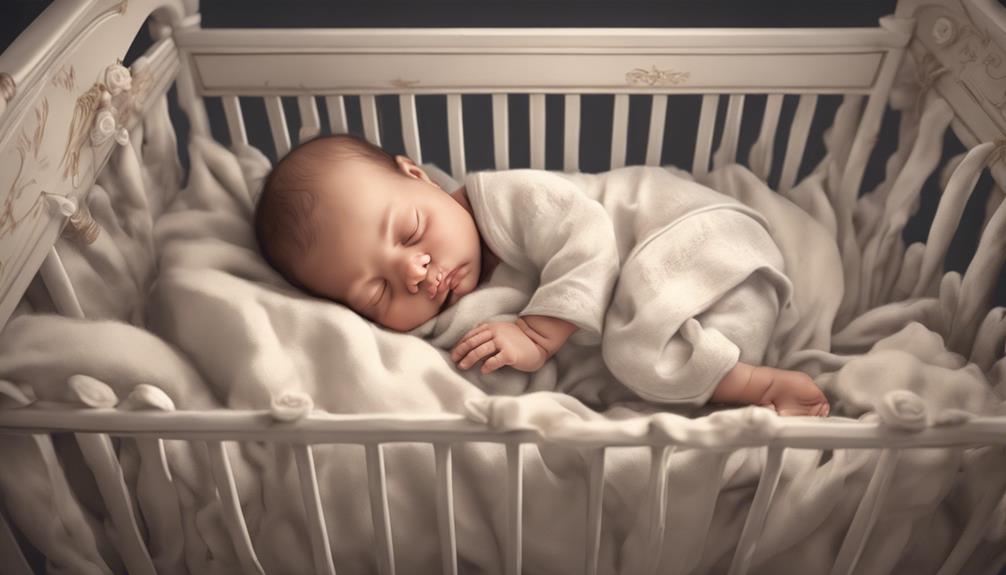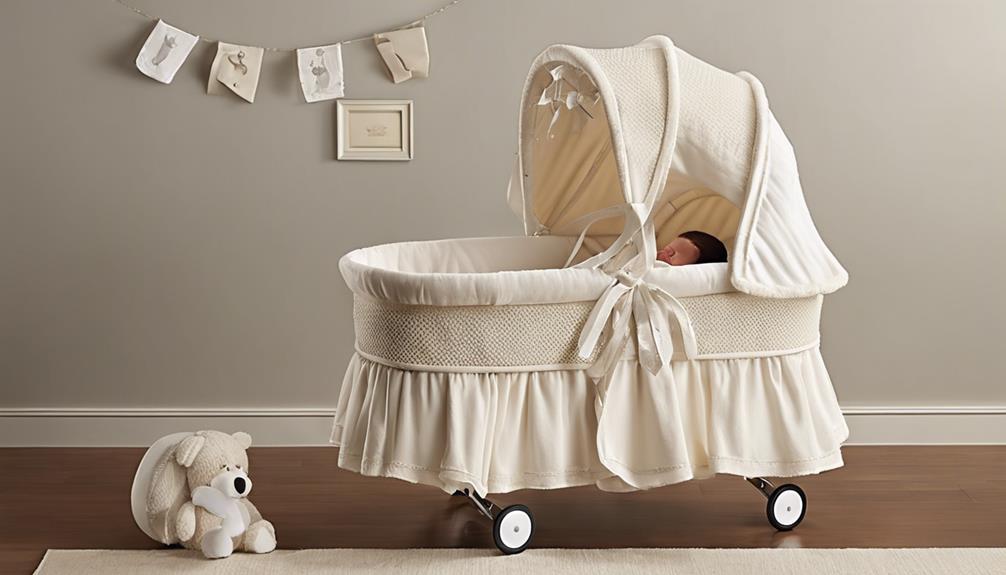As parents, we all cherish those tender moments when our newborn rests on our chest, feeling the warmth and connection between us like nothing else in the world.
However, amidst the bliss of this closeness lies a vital aspect that demands our attention. Imagine being able to savor these precious moments while ensuring the safety and well-being of your little one without compromise.
Let's explore how to navigate the delicate balance between bonding and safety when it comes to newborn chest-sleeping.
Key Takeaways
- Chest-sleeping fosters emotional bonding and physiological regulation in newborns.
- Safe sleeping positions reduce SIDS risk, emphasizing back positioning.
- Room sharing with a crib is recommended over bed-sharing for safer sleep.
- Consulting pediatricians ensures personalized advice for safe sleep practices and healthy habits.
Benefits of Chest-Sleeping
Chest-sleeping provides numerous benefits for newborns, promoting important physiological regulation and emotional bonding between the baby and caregiver. When a baby rests on a caregiver's chest, the skin-to-skin contact plays a crucial role in regulating the baby's temperature, heart rate, and breathing. This close contact not only fosters physiological stability but also enhances emotional security for the little one. The warmth and comfort experienced during chest-sleeping help reduce stress levels, minimizing instances of crying and promoting a sense of safety.
Furthermore, chest-sleeping facilitates breastfeeding, allowing for easier access to the breast and promoting milk production in mothers. This not only strengthens the bond between the baby and caregiver but also provides comfort and nourishment for the baby. The benefits extend beyond the physical vital, as chest-sleeping aids in establishing a deep emotional connection between the baby and the caregiver, fostering a sense of trust and security that's essential for the baby's overall well-being.
Risks to Consider
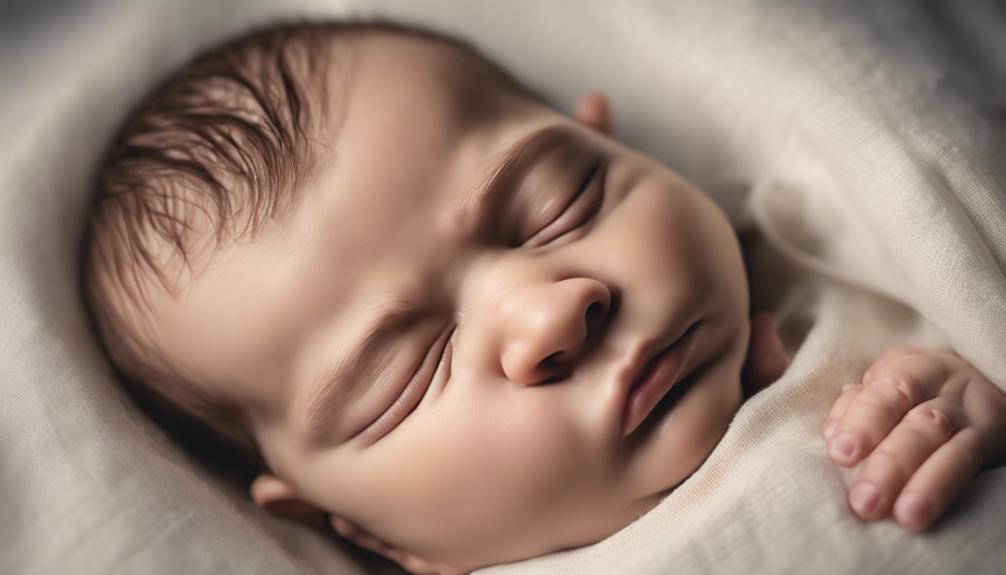
When considering safe sleeping practices for newborns, it's essential to be aware of the potential risks associated with certain sleeping positions and environments.
Chest-sleeping with a baby increases the risk of suffocation and Sudden Infant Death Syndrome (SIDS). The soft surface of couches or chairs during chest-sleeping can heighten the danger of suffocation, as parents mightn't reposition the baby for better breathing.
Falling asleep while chest-sleeping can lead to risks of overlaying or entrapping the baby, further increasing the likelihood of harm. It's important to maintain vigilance during chest-sleeping, as distractions, alcohol consumption, or sedating medications can impair one's ability to respond promptly to the baby's needs.
Ensuring a safe sleep environment for newborns requires attentiveness and eliminating potential hazards, especially when opting for chest-sleeping.
Safe Sleeping Positions

To guarantee the safety and well-being of your newborn while sleeping, the suggested position is on their back, facing you, with the head turned to one side for the best comfort and security. Placing the baby on their stomach or side while chest-sleeping increases the risk of SIDS, so making sure they're on their back is vital. This position helps reduce the chances of suffocation and provides a safe sleeping environment for your infant.
While enjoying the closeness of chest-sleeping, it's important to be mindful of soft surfaces like couches that can pose suffocation risks. Opting for a firm mattress or bed is ideal for a secure sleep setting. By following these safe sleeping practices, you can create a nurturing and secure space for your newborn while cherishing those precious moments of closeness during sleep. Remember, safety always comes first to guarantee peaceful rest for both you and your little one.
Tips for Safe Co-Sleeping
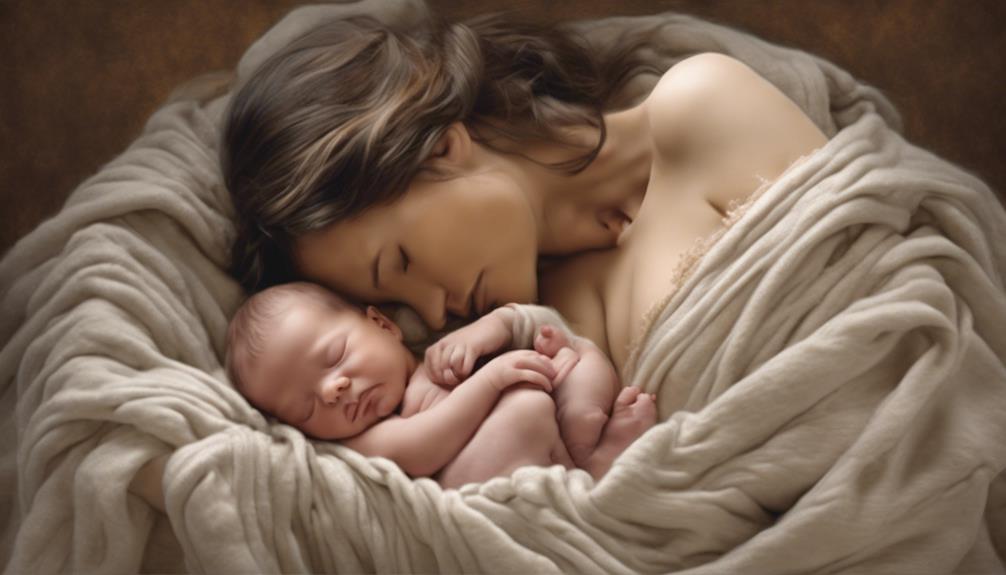
For safe co-sleeping practices, it's vital to make sure that your sleeping environment promotes the well-being and safety of both you and your baby. When considering safe co-sleeping, keep in mind these tips:
- Avoid Bed-Sharing: Bed-sharing increases the risk of Sudden Infant Death Syndrome (SIDS) and should be avoided to guarantee your baby's safety.
- Opt for Room Sharing: Room sharing, where the infant sleeps in a crib or bassinet next to the parents' bed, is recommended by the American Academy of Pediatrics to reduce the risk of SIDS.
- Use Your Parent's Chest: Placing your baby on your chest for skin-to-skin time can promote bonding and provide a safe sleeping environment.
- Follow Safe Sleep Guidelines: Adhering to safe sleep guidelines, such as avoiding loose bedding and ensuring a firm mattress, can help create a safer co-sleeping environment for both you and your infant.
Consulting Pediatricians
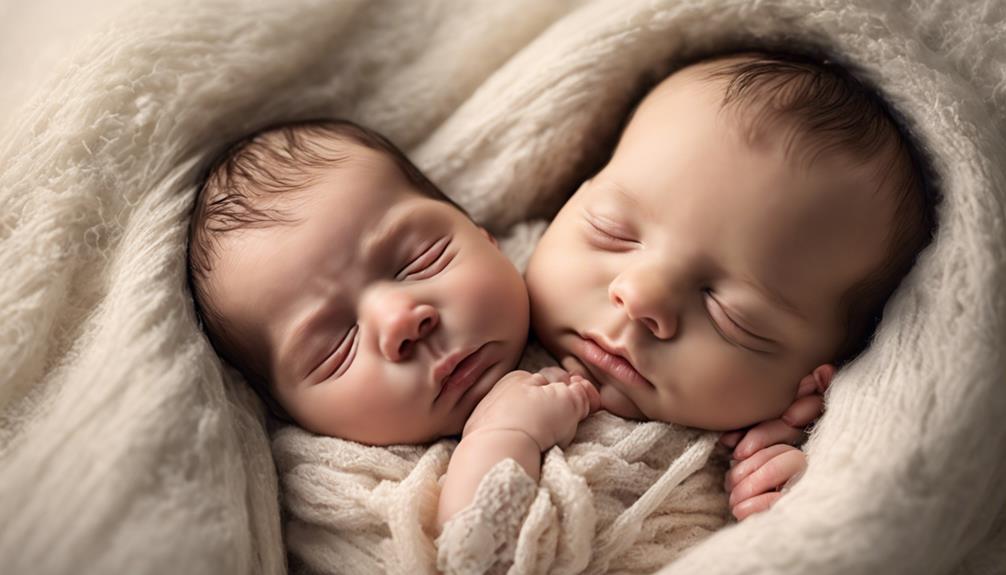
Pediatricians play an important role in providing personalized guidance and recommendations for safe sleep practices tailored to newborns. Consulting pediatricians can offer valuable insights into the benefits and risks of chest-sleeping with newborns. They help guarantee that safe sleep guidelines are effectively followed and can assist in shifting from chest-sleeping to independent sleep habits. Pediatricians are equipped to recommend personalized approaches based on the baby's unique needs and circumstances, promoting a safe and healthy sleep environment.
| Benefits of Consulting Pediatricians | Risks of Chest-Sleeping |
|---|---|
| Tailored advice for safe sleep practices | Potential for suffocation |
| Guidance on moving to independent sleep | Increased risk of SIDS |
| Personalized approaches for individual baby needs | Difficulty in creating sleep independence |
| Ensuring safe sleep guidelines are followed | Disrupted sleep patterns |
| Professional assistance in promoting healthy sleep habits | Challenges in establishing bedtime routines |
Conclusion
So there you have it, folks! Remember, when your newborn is snuggled up on your chest, make sure to follow the safe sleep guidelines to avoid any unwanted surprises.
Because nothing ruins a bonding moment faster than a trip to the emergency room.
Stay safe, stay snuggly, and enjoy those precious cuddles with your little one!
